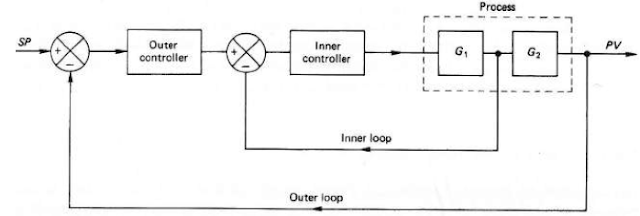Here is a block diagram that I've just found during my ATPL preparation for Instrumentation subject. I'd never thought of ever writing about any topic related to Control in Aerospace, as it wasn't my favorite subject at university, however it made me think...
 |
| Autopilot Block diagram [AviationExam] |
This is a representation of the basic autopilot operating principle including the Outer and Inner Loops. To understand the principles, let's see a bit of theory to understand what do they actually mean.
Inner Loop:
The "primitive/dumb" one, it's stabilizing and maintaining pitch, roll and yaw. The most basic system of an autopilot that provides only stabilization function consisting in controlling movements around the center of gravity of the aircraft is within the inner loop.
 |
| General structure of Inner Loop |
 |
| Example of a typical Inner Loop Control System |
Outer Loop:
Provides the autopilot with navigation (guidance) function. It adds the intelligence to the process (e.g. tracking a radial, holding a speed, climbing a VNAV path) The outer loop tells the inner loop what pitch, roll or yaw to hold for the maneuver, then the inner loop executes this. All the "intelligence" involved is mainly done in this loop.
Examples of outer loop autopilot operating modes:
Roll modes:
- HDG (Select & Hold)
- Nav Track (Track Hold)
- VOR/LOC (Capture & Track)
- Lateral Navigation (LNAV)
- FMS Lateral Navigation
Pitch (flight path) modes:
- Altitude (Select & Hold)
- IAS/Mach (Hold)
- Level change
- Altitude Acquire (Capture)
- Vertical speed
- Glideslope (Capture & Track)
- Vertical Navigation (VNAV)
- FMS Vertical Navigation
- Flare
- FPAH (Flight Path Altitude Hold)
Combines Roll and Pitch modes:
- Approach
- Go-Around
- Control Wheel Steering (CWS)
Cascade Control System:
The cascade control system includes a second feedback loop. Cascade
control gives an improvement over single-loop control handling disturbance
inputs. The effects of cascade control system are an increase in the system
bandwidth and a reduction in the sensitivity to disturbances entering the inner
loop.
 |
| Cascade Control System structure |
Ok, so what's the connection with all these simple theory and my past university assignment?
Back in the days, I had to create a project in which the task was the following:
Project description:
To generate a cascade control loop for
the given transfer function of an aircraft system using PID controllers. The given
transfer function is:
The control
variables are pitch and altitude.
By controlling the measurements of these two variables
and combining them using the control system to design, attitude reading is
obtained. The general structure of the whole cascade control system for this
project is presents in the next figure.
Inner Loop:
The main
role of this part of the system is to control the changes in pitch measurements
which are obtained from the gyroscope. As shown in the figure the errors in
pitch are reduced by comparing it to the desired value.
 |
| The structure of the inner loop |
Outer Loop:
The main goal of this part of the system is to feed the inner loop with
the corrected value of the altitude so it could be combined with the aircraft
system transfer function to obtain an accurate output.
 |
| The structure of the outer feedback loop (Cascade) |
The simulation was performed for different
altitude inputs, and the outputs presented on graphs. (Aircraft Altitude Change, Aircraft Pitch Angle - Desired Vs Actual, Actual Pitch Angle, Error of Altitudes for 100 and 200m, Error of the Elevator Deflection fr 100 and 200m)
A cascade control system was generated to
control the motion of the actuator that is used to deflect the elevator in
order to obtain a desired altitude change. The inner
loop minimizes pitch errors and feeds the actual pitch value to the outer loop
to obtain an accurate reading.
Do you see the connection between an engineering approach for an automation system that is employed on aircraft and the importance of understanding Control theories?
All these are connected. Whether it's engineering or piloting, you're going to meet with Control and basic Control theories everywhere, where automation is applied. Respect Control. Accept it, and learn the basics to conveniently tackle the obstacles in your career.


